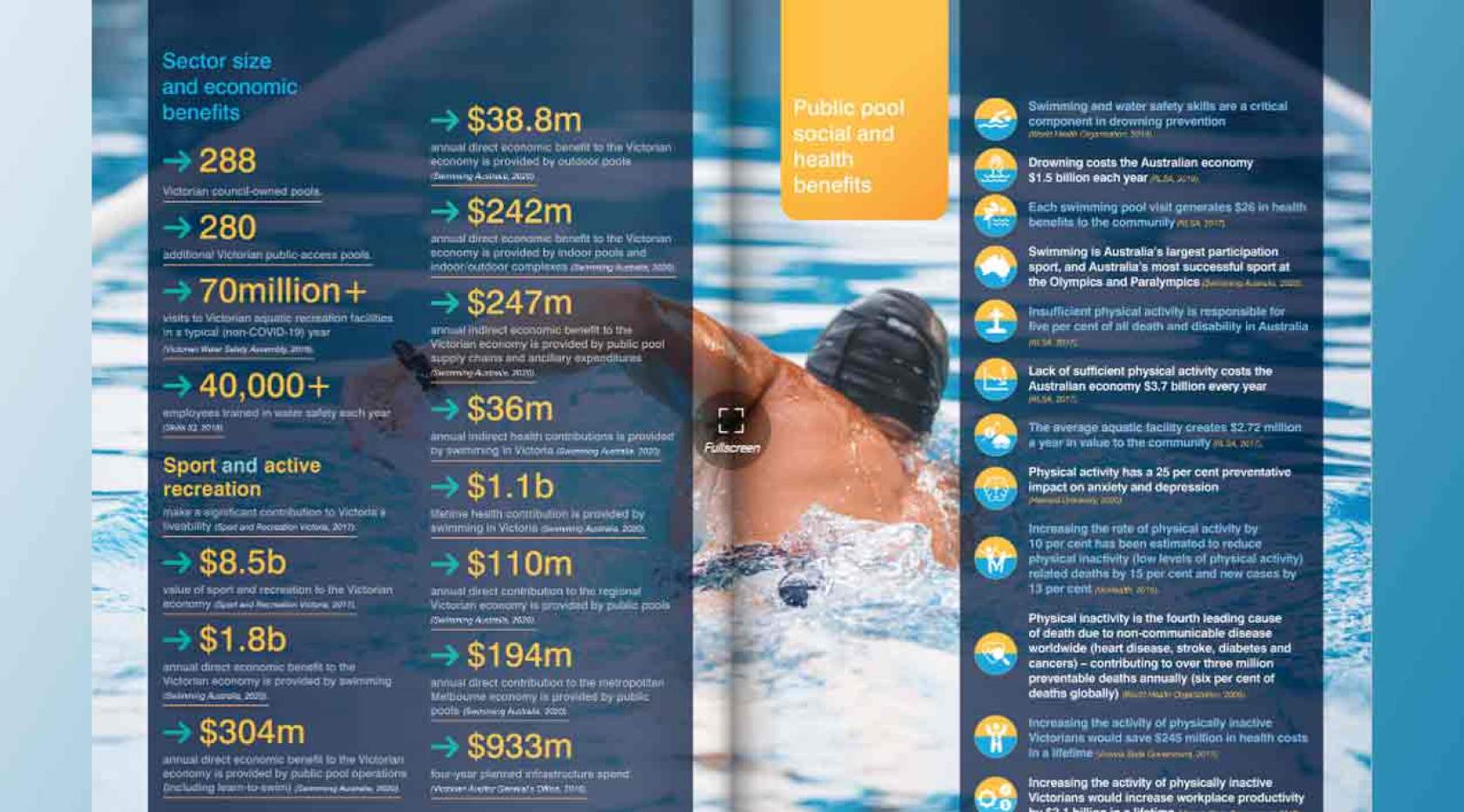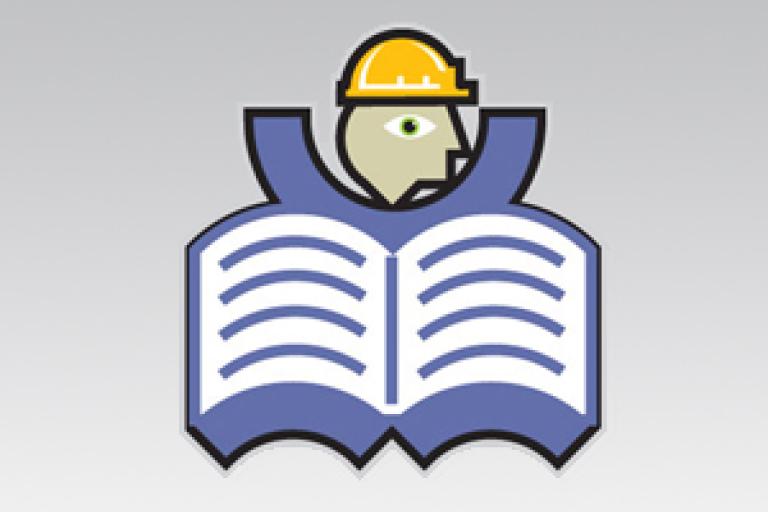Victorian report on the State of the Sector

Life Saving Victoria (LSV) and Aquatics and Recreation Victoria (ARV) have released the Victorian Public Pools: State of the Sector Report. This is the third time the two bodies have collaborated to support a better understanding of the Victorian public pool landscape, with the aim of ensuring the industry’s contribution to the wider Victorian community is well documented and communicated.
It provides a broad snapshot of the industry, enabling better tracking and comparison of key metrics such as industry size, breadth and social/health/economic value, while acting as a source of information and enabling improved analysis and more informed decision making.
Key information includes that there are 288 council-owned pools in Victoria, plus an additional 280 public access pools. In a typical non-covid year there are more than 70 million visitors to these centres. More than 40,000 employees are trained in water safety.
They estimate the direct value to the Victorian economy provided by swimming is $1.8 billion dollars, while swimming pool operation provides $304 million of that value. A further $247 million is added via the supply chains to the public pools.
Public health benefits in Victoria alone are estimated at $36 million each year, while the lifetime benefits are put at $1.1 billion.
The benefit of public pools to regional Victorian economies is put at $110 million, with metropolitan economies benefiting to the tune of $194 million.
National and general statistics
The report also highlights a few key statistics worth referencing to see the importance of swimming and the industry to the general population.
• Swimming is Australia’s largest participation sport, and Australia’s most successful sport at the Olympics and Paralympics (Swimming Australia, 2020)
• Each swimming pool visit generates $26 in health benefits to the community (RLSA, 2017)
• The average aquatic facility creates $2.72 million a year in value to the community (RLSA, 2017)
• Increasing the activity of physically inactive Victorians would save $245 million in health costs in a lifetime (Victoria State Government, 2017)
• Increasing the activity of physically inactive Victorians would increase workplace productivity by $3.1 billion in a lifetime (Victoria State Government, 2017)
• Insufficient physical activity is responsible for five per cent of all death and disability in Australia (RLSA, 2017)
• Lack of sufficient physical activity costs the Australian economy $3.7 billion every year (RLSA, 2017)
• Swimming and water safety skills are a critical component in drowning prevention (World Health Organisation, 2014)
• Drownings cost the Australian economy $1.5 billion each year (RLSA, 2018)
• Physical activity has a 25 per cent preventative impact on anxiety and depression (Harvard University, 2020)
• Increasing the rate of physical activity by 10 per cent has been estimated to reduce physical inactivity (low levels of physical activity) related deaths by 15 per cent and new cases by 13 per cent (VicHealth, 2016)
• Physical inactivity is the fourth leading cause of death due to non-communicable disease worldwide (heart disease, stroke, diabetes and cancers) – contributing to over three million preventable deaths annually (six per cent of deaths globally) (World Health Organization, 2009)
Download the report: www.lsv.com.au/state-of-the-sector-report




